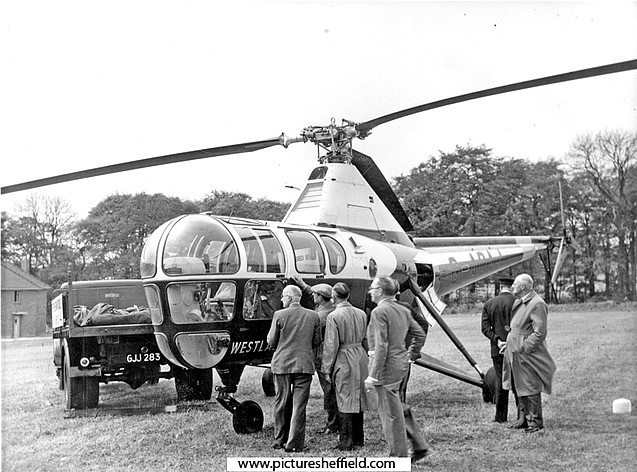RAF Norton
RAF Norton: WW2 Barrage Balloon base (Later a short term helicopter base)
Maps and pictures provided by Mr Michael T Holder (except for the last, obtained from Google Earth ©)
Military user: No.16 Balloon Centre (Sheffield)
Location: In/near Norton, just E of the COAL ASTON WW1 site, about 4nm SSW of Sheffield city centre
NOTES: I can take no credit at all for this entry. All the work was done by Mr Michael T Holder.
It might well be asked why I have included this, and a couple of other barrage balloon bases in this 'Guide'. The answer is very simple - if a barrage balloon, although tethered, isn't flying - what else is it doing several hundred feet above the earth?
The question of how effective they were as a deterrent seems to escape notice since the end of WW2. The simple answer is that they served no purpose at all, except to give local people some obscure sense of security. They were intended as a defence from dive-bombers, but the Luftwaffe didn't have any that could reach much further than the south-east shores of England. And that was in 1940!
However, they could be a menace to RAF aircrews, especially when in difficulty so the RAF had some 3000 deployed by 1944.
This aside, I was very interested to see the picture of the Meteor and Vampire here. Mr Holder thinks it could be associated with training on A1 radar equipment as, after WW2, this site became the No.3 Ground Radio Training Servicing Site, a Radio Training School, an Aerial Riggers Training School and a Radar Servicing Unit. There was no aerodrome available, so presumably they were transported by road, along with a Spitfire 'Gate Guardian'.
What he also discovered, was that this site did indeed become a flying site. With the permission of the O.C. Wing Commander, in 1954 a Westland S.51 Dragonfly was chartered by Firth Brown Tools Ltd, during a rail strike to distribute parcels of vital tools to industry in Manchester, Coventry, Bristol and London.
We'd love to hear from you, so please scroll down to leave a comment!
Leave a comment ...
Copyright (c) UK Airfield Guide





















